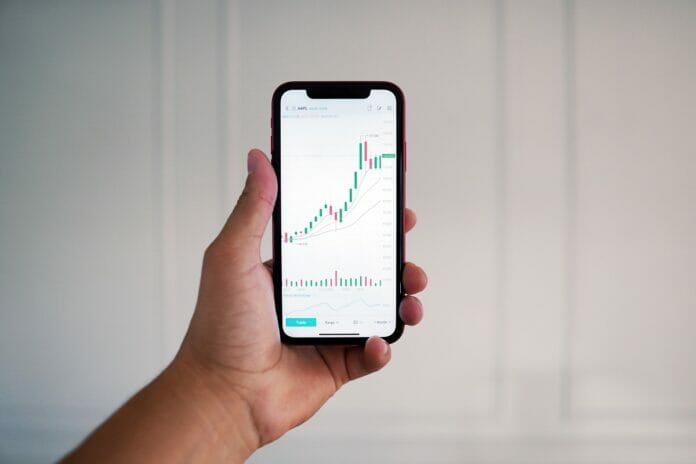Customizing MACD and Moving Averages for different markets can transform your trading game. Whether you’re diving into stocks, forex, or crypto, fine-tuning these tools helps you stay ahead. This guide reveals how to adjust settings for each market, making your strategies sharper and more effective.
Ready to enhance your trading skills? Let’s get started! Visit immediateiplex.com/ if you are looking for a website that connects you to investment education firms that can help you along your investment journey.
Simple Moving Averages (SMA) vs. Exponential Moving Averages (EMA)
When diving into moving averages, we encounter two main types: Simple Moving Averages (SMA) and Exponential Moving Averages (EMA). Each serves a unique purpose and has its advantages.
Simple Moving Averages (SMA):
- Calculation: SMA is calculated by taking the arithmetic mean of a given set of prices over a specific period. For example, a 10-day SMA adds up the closing prices of the last ten days and divides by ten.
- Stability: SMAs are more stable and less sensitive to price fluctuations. This stability can help filter out noise and provide a clearer trend line.
- Use Case: Traders often use SMAs to identify long-term trends. They are preferred when a broad overview is required, like spotting overall market trends over months or years.
Exponential Moving Averages (EMA):
- Calculation: EMA gives more weight to recent prices, making it more responsive to new information. This calculation involves a smoothing factor that applies more significance to the latest prices.
- Sensitivity: Due to its sensitivity, EMA reacts faster to price changes. This quick response can be crucial for traders looking to capitalize on short-term market movements.
- Use Case: EMAs are ideal for identifying short-term trends and reversals. They are commonly used in day trading and for markets that require a quick reaction, like forex or cryptocurrency.
To summarize, while SMA provides a smooth and stable trend line suitable for long-term analysis, EMA offers a quicker response to price changes, making it valuable for short-term trading strategies. Understanding the difference between these moving averages helps tailor strategies to specific market needs.
Choosing the Right Time Periods for Stocks
Selecting the appropriate time periods for moving averages in stock trading can significantly impact your analysis and strategy. Here’s a straightforward approach:
Short-Term (1-20 days):
- Purpose: Ideal for identifying immediate trends and making quick decisions.
- Application: Day traders and swing traders often rely on short-term moving averages to spot entry and exit points.
Medium-Term (20-60 days):
- Purpose: Balances short-term responsiveness with long-term stability.
- Application: This period is popular among traders who seek to capture trends that last a few weeks to a couple of months.
Long-Term (60-200 days):
- Purpose: Focuses on long-term trends and major market shifts.
- Application: Long-term investors use these averages to make decisions based on overarching market movements, minimizing the impact of daily price fluctuations.
Each time period serves a distinct purpose, and choosing the right one depends on your trading goals. Short-term periods offer agility but can be noisy, while long-term periods provide stability but may lag in response.
Optimal Moving Average Settings for Forex
Forex markets are dynamic and often volatile, necessitating moving average settings that can adapt quickly:
Short-Term (5-20 periods):
- Application: Used for capturing immediate market movements.
- Advantage: Helps in making rapid decisions in a fast-moving market.
- Example: A 10-period EMA is commonly used in forex due to its quick response to price changes.
Medium-Term (20-50 periods):
- Application: Balances the need for responsiveness with a broader trend view.
- Advantage: Reduces the noise while still being reactive enough for short-term trades.
- Example: A 30-period EMA or SMA can offer a good balance for most forex strategies.
Long-Term (50-200 periods):
- Application: Used to identify overarching trends and major shifts.
- Advantage: Provides a clear picture of the market’s long-term direction, minimizing short-term noise.
- Example: A 100-period SMA helps forex traders understand the long-term trend, which can be crucial for strategic positioning.
In forex, short-term moving averages are critical for capturing rapid changes, while long-term averages help in understanding the bigger picture.
Best Practices for Moving Averages in Crypto Trading
Crypto markets are known for their volatility, making the choice of moving average settings particularly important:
Short-Term (5-15 periods):
- Purpose: Captures rapid price movements.
- Use Case: Day traders and those looking to make quick gains often use very short-term EMAs to stay ahead of market moves.
- Example: A 7-period EMA can help traders react swiftly to sudden price changes.
Medium-Term (15-50 periods):
- Purpose: Balances short-term volatility with trend reliability.
- Use Case: Swing traders who aim to hold positions for several days to weeks benefit from this period.
- Example: A 21-period EMA or SMA is popular among swing traders for its balance of responsiveness and stability.
Long-Term (50-200 periods):
- Purpose: Focuses on long-term trends.
- Use Case: Investors looking to understand the overall market direction use these settings.
- Example: A 50-period SMA provides a broader view, helping investors make informed long-term decisions.
In crypto trading, short-term moving averages allow for quick reaction to market swings, while medium to long-term averages help in understanding and navigating broader trends.
Conclusion
Mastering MACD and Moving Averages customization unlocks new trading potential. By adapting these tools to specific markets, you can gain a competitive edge and improve your decision-making. Remember, ongoing learning and adjustments are key to success. Keep refining your approach, and always seek advice from financial experts. Happy trading!







